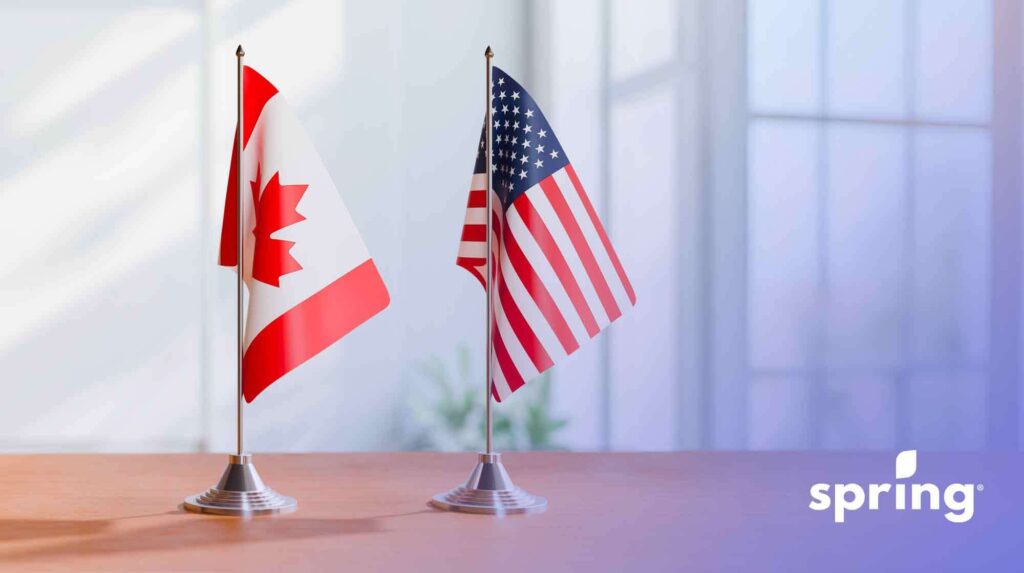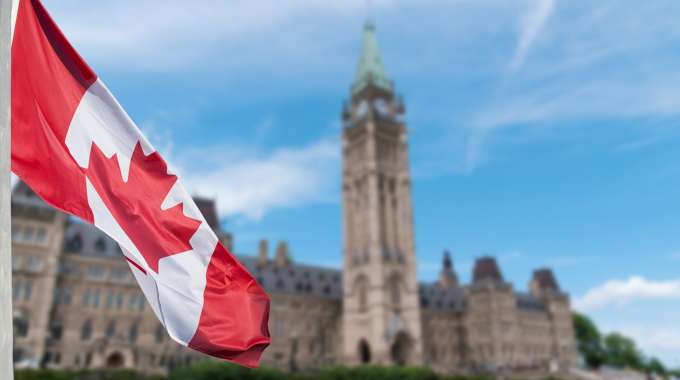At Spring Financial, we’re on a mission to change the financial future for millions of Canadians for the better. Amid all the uncertainty surrounding tariffs, we set out to understand how Canadians truly feel and how we can best support them.
Tracking the Tariff Turmoil
On the day President Donald Trump was sworn in in January, he announced a 25% tariff that would be rolled out on February 1st. On February 1st, he signed an executive order making the tariffs a reality, only to pause the tariffs two days later. In the nearly two months since the initial tariffs rolled out, these threats have grown, changed, and evolved making it difficult to keep up.
As the tariff threats, and realities, continue to evolve, it can be difficult to to understand how exactly these tariffs will impact our everyday finances as well as our economic growth.
Confused About the Tariffs? You’re Not Alone
We recently conducted a survey to gauge how Canadians feel about the tariffs on Canadian imports and exports and their ability to withstand the increased costs that may be coming their way. If you’re feeling concerned or unclear about what the tariffs will actually mean for your day-to-day life, you’re not alone.
According to the survey, nearly three-quarters (74%) of Canadians say the tariff threats make them nervous about their personal financial situation; this number jumps to 80% for both Gen Z and those earning below a $50K salary. And it’s no wonder. The cost of everyday life was already challenging for Canadians. Just last year, nearly half (45%) of Canadians were concerned about day-to-day expenses and nearly three quarters (74%) reduced their holiday spending due to rising living costs.

Despite these concerns, less than half of Canadians (45%) are confident they know how the tariffs will affect their daily life.
The reality is, this is the first time Canada has been involved in a trade war like this so it’s difficult to predict the real effects. What Canadians can do, though, is take steps to future-proof their finances in the face of uncertainty.
Five Steps You Can Take Today to Prepare Yourself
Our survey found that the majority of Canadians (80%) have made a conscious effort to buy more Canadian-made products in response to the tariff threats, with some organizations like BC Liquor and LCBO even removing US liquor from their shelves and focusing on products with domestic production. For anyone that wants to take steps to feel better about their financial situation, here are five simple steps that can help.
1. Know Your Finances Inside and Out
Understanding the full picture of your personal finances is the first step to being more financially empowered. If you aren’t already, start tracking your finances. Compare your monthly income with your set monthly expenses (think rent, groceries, bills, etc.) to determine how much money you’re currently spending and saving.
There are some great tools out there that can help simplify this process like the Bloom app, a free AI-powered financial concierge that tracks income and expenses from across all accounts to give you your full financial picture. Bloom’s AI tool OscarAI enables you to ask questions specific to your financial situation to get real-time guidance on the areas where you may be overspending or opportunities to save more.
2. Create a Budget
Based on your current financial situation, set a budget so you know how much money you have available after your expenses each month. Determine what is most important to you to ensure you’re accounting for your “fun” expenses. This might be going out for meals, shopping, skincare, going to events, etc. Understanding what you have to work with and where you want to spend helps keep your finances on track each month.
3. Save an Emergency Fund
Experts recommend trying to have three to six months worth of your regular expenses saved for an emergency. With the tariffs causing uncertainty, you may want to allocate even more to your emergency fund, if possible. One financial philosophy to consider is the 50-30-20 rule in which 50% of your after-tax income goes to needs, 30% goes to wants, and 20% goes to savings.
Both of these strategies can help you navigate financial challenges, but if these goals feel out of reach, even small monthly savings can build a valuable financial cushion. Start by determining how much money is left in your account after your expenses each month. Then, set up an automatic e-transfer for a realistic amount into your savings. Even $20 per month adds up. Automating this process removes the hassle of remembering to save and ensures your emergency fund continues to grow effortlessly.
4. Reduce Debt and High-Interest Payments
When assessing your current financial situation, try to determine your largest sources of debt and where you are paying the highest interest. Are there any areas in which you can consolidate your debt or move your high-interest payments into a more affordable debt package?
If you’re currently trying to save money and pay off debt, consider allocating more money to eliminate your debt before focusing on saving. If you’re paying off debt with extremely high interest rates, like those from payday lenders for example, try exploring alternative borrowing options that help you get out of the cycle of debt faster.
5. Shop (and Sell!) Local
Whether shopping online or in-person, any purchases from the US are subject to tariffs when crossing the border into Canada. These taxes can add up quickly, so opting to shop from Canadian companies can help avoid those added expenses as well as protect domestic industries.
We know that shopping locally can also mean increased costs. While the majority of Canadians have made an effort to shop locally for Canadian goods since the imposed tariffs began, only 72% are willing to pay more to do so. Here are some tips for shopping locally while staying on a budget,
Finding Neighbourhood Produce Stores:
Typically, major grocery stores come with slightly higher prices, even if you’re buying Canadian products. Instead, look for local produce stores like City Avenue Market and Persia Foods that come with lower price tags and, often, great loyalty programs. These stores also typically offer other staples like milk, eggs, and cheese, so you can still get most of your groceries in one stop.
Searching for Money-Saving Grocery Apps
Apps like Too Good to Go and Odd Bunch both help divert food from landfills while offering you a great deal. Whether it’s helping cafes and bakeries sell their final products for the day on Too Good to Go or finding a home for the produce that’s too “ugly” for grocery stores with Odd Bunch, you can score great deals that help reduce your grocery bill.
Getting Thrifty with Your Wardrobe
If you’re looking to spruce up your summer wardrobe, local thrift stores or your local online community like Marketplace or Poshmark can be great resources to buy second hand and stay within budget.
Alternatively, if you’re overdue for a wardrobe cleanse yourself or have items you’re ready to part with (furniture, sporting equipment, etc.), Springtime, specifically April and May, are said to be the best time to sell, with sellers earning more within this time period.
Final Thoughts
The uncertainty surrounding the U.S. x Canada tariffs has left many Canadians feeling uneasy about their financial future. With rising costs and a lack of clarity around how the import tariffs will impact daily life, it’s more important than ever to take control of your finances and prepare for potential economic uncertainty. By understanding your financial situation and making conscious spending choices, you can help future-proof your finances against uncertainty to the Canadian economy.
At the end of the day, financial resilience is about adaptability. Whether it’s choosing Canadian-made products, finding creative ways to save, or reassessing your spending habits, every effort counts.
These findings are from a survey conducted by Spring Financial from March 13th to March 17th, 2025, among a representative sample of 1,500 online Canadians who are members of the Angus Reid Forum. The survey was conducted in English and French. For comparison purposes only, a probability sample of this size would carry a margin of error of +/-2.53 percentage points, 19 times out of 20.








